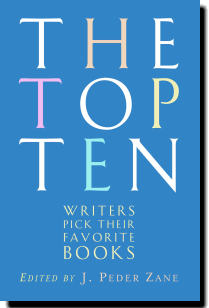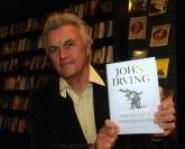Top Ten contributor Scott Turow has built a long, illustrious career crafting topnotch legal thrillers. Though he works within a traditional genre, Turow also pushes the envelope.
Consider his latest novel, Suspect, which plays with the au courant ideas of #MeToo and Diversity, Equity and Inclusion in a fast-paced tale of scandal and crime.
![]() The action centers around Lucia Gomez, the celebrated police chief in Highland Isle – a city in Turow’s own Yoknapatawpha, Kindle County, Illinois. She’s had a spotless record until now; three male police officers have accused her of soliciting sex in exchange for promotions. Gomez claims she is the victim of smear campaign launched by a dirty cop she got removed from the department, Moritz “the Ritz” Vojczek, who is now a wealthy real-estate developer.
The action centers around Lucia Gomez, the celebrated police chief in Highland Isle – a city in Turow’s own Yoknapatawpha, Kindle County, Illinois. She’s had a spotless record until now; three male police officers have accused her of soliciting sex in exchange for promotions. Gomez claims she is the victim of smear campaign launched by a dirty cop she got removed from the department, Moritz “the Ritz” Vojczek, who is now a wealthy real-estate developer.
The PI hired to investigate the case – and first-person narrator of our tale – is not your average private dick. As Charlie Gofen writes in The National Book Review: “Turow takes an interesting risk in Suspect, telling the story from the perspective of the 33-year-old bisexual female investigator Pinky, who wears a nose nail, is ‘inked from neck to ankle and with a magenta Mohawk,’ and oozes sex positivity. She can’t even describe a local restaurant without noting that the carnitas ‘rival a G-spot orgasm.’ It would seem a stretch for Turow to channel Pinky, but he pulls it off, and she’s actually quite endearing and turns out to be a resourceful sleuth.”
Pinky – who first appeared in Turow’s previous novel, The Last Trial, and is the granddaughter of Turow’s first among equals character, lawyer Alejandro “Sandy” Stern – turns to Tonya Eo, a current cop and former girlfriend, for help. Mostly, however, she relies on her wits and instinct. “My Spidey-sense tells me this guy is up to something strange or dangerous,” she says at one point.
Tom Nolan writes in the Wall Street Journal: “The courtroom scenes in Suspect are rich with the character sketches and surprise revelations we’ve come to expect from a Scott Turow novel. Pinky’s own narrative presents a vivid portrait of an offbeat character who, at 33, is still a work in progress. The suspense and intrigue build as the chapters progress, culminating in a breathtaking finale.”
Writing in the Los Angeles Times, Paula L. Woods observes: “While Turow wasn’t the first attorney to write a legal thriller, or the most prolific — Erle Stanley Gardner’s Perry Mason mysteries number some 80 — he has created a body of work that is unparalleled in the breadth of its examination of the law and human relationships.”
The unsigned Kirkus review probably put it best: ““Turow clearly had fun writing this one, and his fans will have fun reading it.”
- Read an excerpt from “Suspect”
- Listen to Scott read from the novel
- Watch Scott discuss the novel
- Visit Scott’s official website
Scott Turow’s Top Ten List
1. A Portrait of the Artist as a Young Man by James Joyce (1916), which first showed me that fiction could articulate what I took as wild and private dreams.
2. Anna Karenina by Leo Tolstoy (1877), because of the powerful and intimate rendition of these webbed lives.
3. The Rabbit Tetralogy by John Updike - Rabbit Run (1960), Rabbit Redux (1971), Rabbit is Rich (1981), Rabbit at Rest (1990) - because of their acute observation and moral courage.
4. Herzog by Saul Bellow (1964), for its extraordinary language, intellectual power and its observations of Chicago.
5. Tell Me A Riddle (1960) by Tillie Olsen, for its inventiveness and power.
6. The Count of Monte Cristo by Alexandre Dumas (1844), for its spectacular plot.
7. Collected Works of William Shakespeare, for their miraculous language and extraordinary observations about humanity.
8. The Bear by William Faulkner (1942), for telling the quintessential American story from inside the American mind.
9. Tender Is the Night by F. Scott Fitzgerald (1934), an extremely contemporary book that anticipated much of our current preoccupation with gender.
10. The Thin Man by Dashiell Hammett (1933), for its elegance and perfect mystery.



